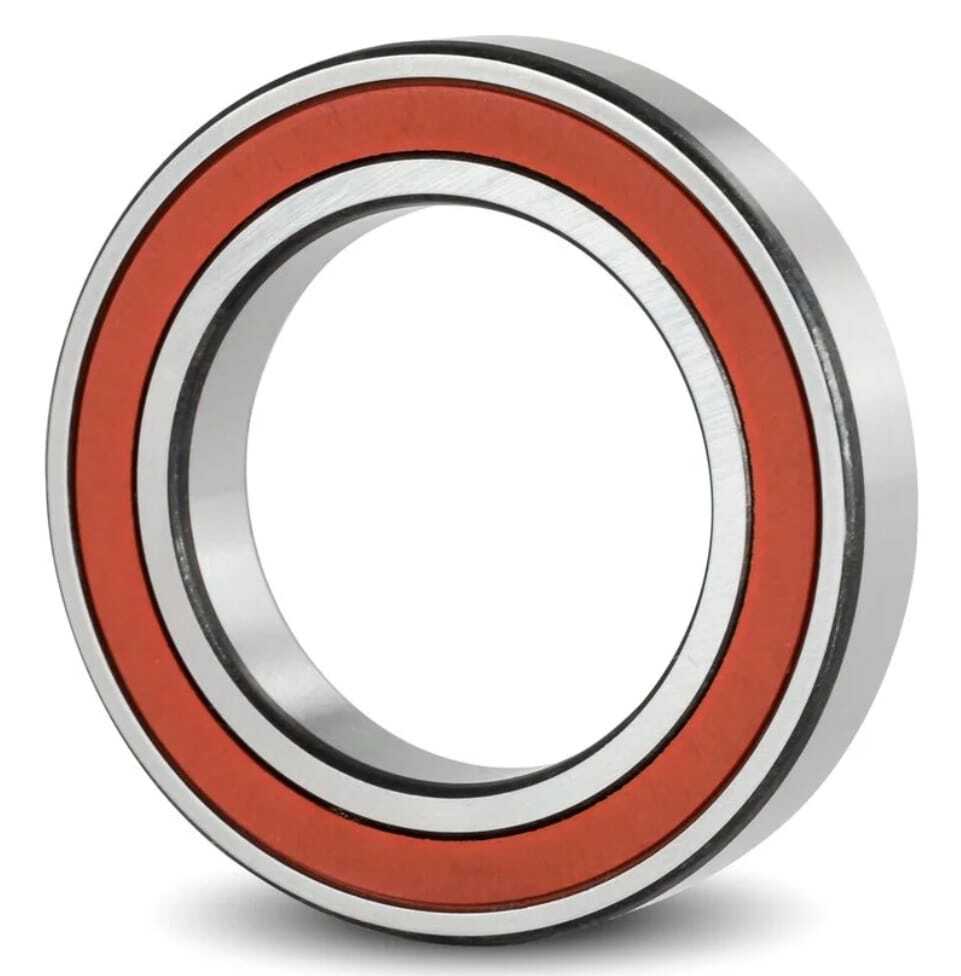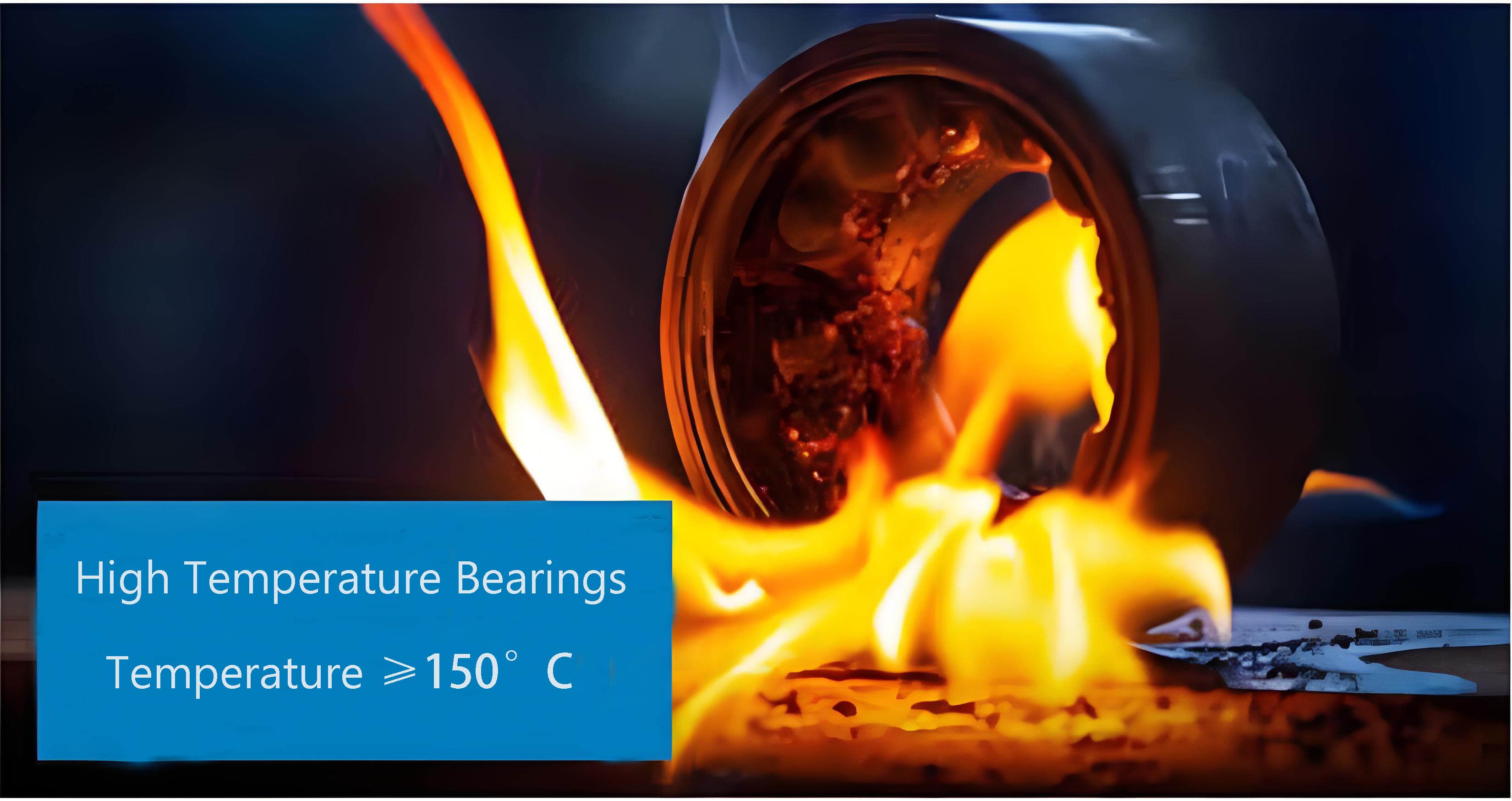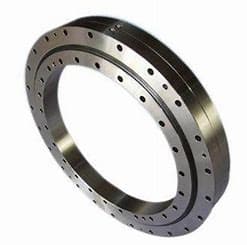A Guide on Dental Bearings
Dental bearings play a vital role in dental handpieces, affecting their performance and lifespan. For dental professionals, it's important to...
Angular contact bearings are essential for high-speed, high-precision applications.
They are particularly suitable for machine tool spindles, aerospace equipment and precision machinery.
Their unique design enables the bearings to maintain high rigidity and stability under heavy loads.
This guide covers the key types, common applications, preload methods, and practical selection tips to help you choose the right bearing for your needs.
Angular contact bearings are ball bearings where the inner and outer raceways are set at an angle to each other.
This design allows the bearing to support both radial and axial loads in a single direction.
It also enables high-speed operations and maintains high precision.
One key advantage of angular contact ball bearings is their ability to handle axial loads.
This capacity increases as the ball bearing contact angle increases.
The contact angle is a key feature in angular contact bearings.
It refers to the angle between the line connecting the contact points of the ball and the raceways.
This line is compared to another line that is perpendicular to the bearing axis. (Typically 15°, 25°, 30°, 40°)
Bearing contact angle determines how the bearing handles axial loads.
|
Contact Angle |
Thrust Load |
|
|
Larger |
Higher |
Lower |
|
Smaller |
Lower |
Higher |
When under load, the force travels through the balls along the contact angle, transferring between the raceways.
This allows the angular contact ball bearing to support both axial and radial loads.
It enhances load adaptability, stability, and precision during rotation.
Features:
Single Row Angular Contact Ball Bearing: 7200 BECBP
High rigidity uses:
Note
Miniature Angular Contact Bearings are compact, high-precision versions of standard single row angular contact bearings.
Angular contact bearings typically have bore sizes under 10 mm and are optimized for space-constrained, precision-critical applications.
Duplex angular contact ball bearings, also known as matched angular contact ball bearings, are precision pairs.
They handle combined loads and specific mounting arrangements. Here are three common types:
Back-to-back angular contact bearings have the following features:
Face-to-face angular contact bearings are characterized by:
Tandem angular contact bearings offer advantages such as:
A double row angular contact ball bearing consists of two single-row angular contact ball bearings.
These angular contact bearings are arranged back-to-back in a single assembly.
Key Features:
Uses:
Double row angular contact ball bearing: 3200 ATN9
Double row angular contact ball bearings with sealed and shielded designs offer superior protection, durability, and reliability in demanding applications.
They come with either rubber seals or metal shields based on application needs.
Rubber seals suit humid, dusty environments, while metal shields work best in clean, high-speed conditions.
Four point contact bearing features a 30° contact angle and a split inner ring design.
when subjected to radial loads, the balls establish four-point contact with both the inner and outer rings.
This unique design allows a single bearing to handle axial loads in both directions.
Under pure/heavy axial loads, the load is shared at two contact points, similar to standard angular contact bearings.
Four-point Contact Ball Bearing: QJ 202 N2MA
Features:
Uses:
The selection of angular contact bearings requires careful consideration of various application parameters.
These include speed, load direction, and rigidity requirements.
Other factors such as contact angle, materials, and pairing arrangements are also important.
|
Application Scenario |
Target Speed (rpm) |
Recommended Bearing Reference Speed |
|
High-speed CNC spindle |
12,000 |
≥ 15,000–18,000 rpm |
|
High-speed electric motor |
18,000 |
≥ 22,000 rpm |
|
General industrial drive |
3,000–5,000 |
≥ 6,000 rpm |
Tip: When selecting bearings, ensure that the reference speed ≥ target speed, maintaining a safety margin of 10-30%.
Different contact angles are suitable for different speed and axial load requirements.
Refer to the table below for initial selection guidance.
When selecting bearings, it’s also important check the angle codes used by different brands. (e.g., NSK angular contact bearing A5 = 25°).
|
Contact Angle (°) |
Characteristics |
Application Scenarios |
NSK |
SKF |
FAG |
NTN |
Timken |
|
15° |
High speed, low load |
Spindle motors, precision instruments |
C |
CD |
C |
C |
C |
|
25° |
Medium speed, moderate axial load |
Spindles, servo motors, machine tools |
A5 |
AC |
E |
E |
AC |
|
30° |
Balanced for medium speed and medium-high load |
Industrial drives, general equipment |
A |
– |
– |
A |
– |
|
40° |
High thrust, lower speed |
Pumps, compressors, gearboxes, heavy machinery |
B |
B |
B |
B |
B |
|
Application |
Material/Configuration |
Features |
|
High Speed |
Hybrid Ceramic + PEEK Cage |
Enhanced performance, reduced heat generation |
|
High Humidity/Corrosion |
Stainless Steel or Full Ceramic |
Superior corrosion resistance, suitable for high moisture or chemical exposure |
|
Quiet/Light Load |
Resin Cages (Nylon, Phenolic, etc.) |
Low friction, noise-reducing, ideal for light load conditions |
For high-speed, high-precision applications such as spindles and servo motors, preload is an important factor to consider. It helps improve rigidity and reduce vibration. Preload should be carefully addressed during the bearing selection process.
Preload is closely related to the contact angle and bearing pairing arrangement. The specific preload method—such as using springs or spacers—is usually determined during installation. It depends on the operating conditions and performance requirements of the application.
|
Pairing Form |
Characteristics |
Recommended Applications |
|
DB (Back-to-Back) |
High rigidity, suitable for reverse axial loads |
Spindles, tool spindles, and other applications with high rigidity requirements |
|
DF (Face-to-Face) |
Adjustable, suitable for misalignment |
Long shaft structures or when bearing housing concentricity is not high |
|
DT (Tandem) |
Same direction axial loads, improves thrust capacity |
High-speed operations, slight reduction in rigidity for enhanced speed |
Standard Grades:
|
Country/Region |
Common Grade |
Remarks |
|
China |
GCr15 |
Most common bearing steel |
|
USA |
AISI 52100 |
Similar to GCr15 |
|
Japan |
SUJ2 |
Japanese industrial standard |
Characteristics:
Typical Applications:
Example Materials:
Characteristics:
Typical Applications:
Common models:
AISI 440C, AISI 316L, AISI 304
Characteristics:
Typical Applications:
Features: High hardness, low friction coefficient, excellent corrosion resistance, and high-temperature performance.
|
Cage Type |
Common Materials |
Recommended Contact Angle |
Applications |
Temperature Range |
Features & Advantages |
|
Stamped Steel Cages |
Steel |
Primarily 30°, 40° depending on load conditions |
Medium-low speed, medium-low load |
Up to 120°C |
Cost-effective, versatile, medium strength, high temperature resistance |
|
Machined Brass Cages |
Brass |
30°, 40° |
Medium speed, high load, heavy-duty |
Up to 150°C |
High strength, excellent high-temperature resistance, great anti-vibration, good heat dissipation, long lifespan |
|
Molded Resin Cages |
Nylon 66, Nylon 46 |
≤30° (15°/25°/30°) |
Medium speed, light to medium load, low noise |
Generally 60-80°C |
Low noise, low friction, lightweight, excellent high-speed performance |
|
Machined Synthetic Resin Cages |
PEEK (Polyetheretherketone), Phenolic Resin |
≤30° |
High speed, high precision, low noise, high-precision spindles |
Up to 100–120°C |
Excellent high-speed performance, high precision, low vibration, low noise, high temperature resistance |
|
Special Polyamide Resin Cages |
Polyamide |
≤30° |
High speed, high precision, spindle bearings |
Generally 60-80°C, special versions up to 100°C |
Low noise, low friction, stable precision, excellent high-speed performance, widely used in spindle bearings |
Preload refers to applying a small amount of force to the bearing in advance.
This is done before the angular contact bearing is subjected to any external loads.
This ensures that the rolling elements remain in contact with the raceways.
Even when no external loads are applied, the bearing maintains internal stability.
Function:
Preload Methods:
|
Application |
Preload Level |
Reason |
|
High-speed applications (e.g., spindles, CNC machines) |
Light to moderate |
Minimizes friction and heat buildup, ensuring stable performance. |
|
Heavy-load applications (e.g., gearboxes, compressors) |
Moderate to high |
Improves load distribution and reduces wear, enhancing bearing life. |
|
Precision applications (e.g., aerospace, medical equipment) |
Light |
Reduces internal stress, ensuring high accuracy and minimizing thermal expansion. |
|
Rotating equipment with varying axial forces (e.g., electric motors, turbines) |
Variable, adjustable |
Adapts to varying forces, maintaining consistent bearing performance. |
|
Feature |
Angular Contact Bearings |
|
|
Contact Angle |
Has a contact angle (typically 15°, 25°, 30°, 40°) |
No contact angle; radially aligned |
|
Axial Load Handling |
Can handle axial loads in one direction (both directions when paired) |
Limited axial load capacity |
|
Rigidity |
High rigidity, especially with preload |
Lower rigidity, more flexible |
|
Speed |
High-speed applications |
Medium to high-speed applications |
|
Types of Load |
Combined (radial + axial) loads |
Radial loads |
|
Bearing Arrangement |
DB, DF, or tandem for axial load |
Individually or in pairs |
|
Applications |
Precision machinery, spindles, robotics, gearboxes |
General industrial machinery, electric motors |
|
Mounting |
Requires precise mounting for optimal performance |
Easier to install and align |
|
Radial Play |
Controlled by preload (flexible) |
Defined clearance (CC0, CC1…) |
Angular contact bearings are crucial for high-speed, high-precision applications, handling both radial and axial loads simultaneously.
Choosing the right bearing involves considering speed, load, and size.
After selecting the structure, visit the angular contact ball bearing manufacturer's website to verify model, dimensions, and installation methods for compatibility.
Contact Lily Bearing today.

Dental bearings play a vital role in dental handpieces, affecting their performance and lifespan. For dental professionals, it's important to...

High temperature bearings are made to withstand extreme heat and keep working reliably. They help machines run smoothly even in hot conditions. This...

Curious about maintaining ceramic bearings? Questions like “What makes ceramic bearings better?”, "What can I use to clean ceramic bearings?" or...